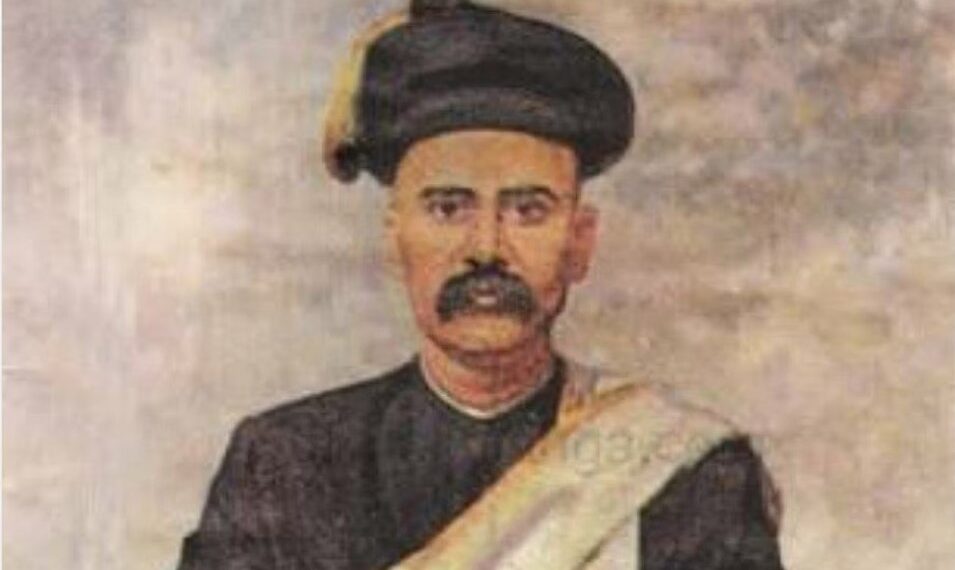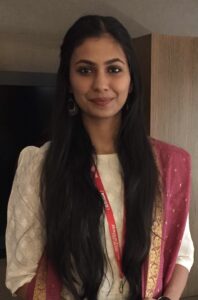In the face of opposition from several sections of the society, Agarkar held on to the liberal ideas of equality of opportunity, individual choice, individual freedom, and education for women. Agarkar’s treatment of the subject of women’s education was at once insightful, critical and persuasive.
Gopal Ganesh Agarkar was an Indian thinker, known primarily for his writings in the Marathi newspapers Kesari and Sudharak. His writings and visionary thoughts often come to be overshadowed by his difficult association with Lokmanya Tilak. The mutual diatribes between the two obscure the clarity and conviction of his ideas. However, Agarkar’s thoughts and ideas continue to be relevant and his predictions accurate.
The late 19th century in India was an era of conflict of ideas. Women’s education became the center of such a conflict with both sides making sharp attacks against the other. Agarkar in his writings, often cited the attacks made against his position. Following is one among the several attacks leveled against Agarkar – ‘And these are the leading figures in our society. We used to think of them as intellectuals, now we know how intelligent they really are! How did these ‘intellectuals’ get this ridiculous idea of putting women in schools! It would be better to throw India’s wealth into the sea than to use it for women’s education’ (Agarkar, 1994, Vol. 3, 157). Agarkar wrote in sharp and precise words with the view to counter the status quo and to persuade his readers and opponents alike.
Agarkar did not take a revolutionary position on women’s education and instead framed his argument in terms of simple questions. He first articulated the need for primary education in India by discussing the positive impact of primary education in Europe. He begins शिक्षणाबद्दल सक्ती करावी काय? (Should education be made compulsory?) by referring to Lord Macaulay’s Speech on Education in the House of Commons in 1847; here Lord Macaulay endorsed the phrase, ‘educate the people’, and attributed it to William Penn, George Washington and to Thomas Jefferson. Agarkar believed that all developed nations had one thing in common and that was primary education. In इंग्रजी विद्या व आमची सामाजिक स्थिती (English Education and our social condition) he elaborates on the positive impact that education tends to have in any society – Education offers the freedom to think and also offers business freedoms. In a related article titled प्राथमिक शिक्षण सरकारचे आवश्यक कर्तव्य आहे (Primary Education is the Responsibility of the State), he states that the state cannot and must not shirk from providing primary education to its people. He further elucidates that European political systems may have abridged the role of the king or the state. And yet primary education finds a place within the role of the state. Even those who believe in a very limited state, hold the belief that the protection of people’s life and property is the primary function of the state’ (Agarkar, 1994, Vol. 1, 158). Agarkar’s insistence on a state-provided primary education stemmed from two concerns. Firstly, the lack of civil-society-run educational institutions, and the lack of awareness among people about the need for primary education leaves no alternative but to rely on the state. He further suggested that it doesn’t matter if children get education at home or through institutions established by civil society. If the society is able to provide education, the state need not interfere. However, if the society is unable to provide education, the responsibility lies with the state’ (Agarkar, 1994, Vol. 1, 161). Secondly, Agarkar strongly believed that the absence of education leads people to indulge in antisocial and criminal behavior; one uneducated individual becomes a potential danger to the rest of the society and hence the state must play its role in protecting its citizens. Agarkar ends his discussion on primary education by stating unequivocally that educating people does not mean providing higher education or vocational education. It refers to the basic education that helps people carry out daily activities and business (Agarkar, 1994, Vol. 1, 156).
Agarkar proceeds to build a case for women’s education on the foundation of primary education for all. His intent and his ideas on women’s education are deeply reminiscent of Mary Wollstonecraft. In one of his early writings, Agarkar speaks of the need to provide education that enables women to become financially independent. In स्त्रियांस चरितार्थसंपादक शिक्षण देण्याची आवश्यकता (The Need for Providing Women with Education for Employment), he portrays how women have to depend on the mercy of a male relative after the death of their husbands, and in several cases women prefer death over seeking pity. In such a scenario, the only way out is an education that can bring some means of livelihood to the woman. Agarkar espouses the argument made by Wollstonecraft a hundred years ago. In Chapter 12 of Vindication, titled ‘On National Education’, Mary Wollstonecraft states that it is essential for women’s dignity that they be given the right and the ability to earn their own living and support themselves (The British Library, n.d.).
Agarkar supported women’s education not just as a liberal idea but he also saw in it a way to prevent child marriages. In the then prevalent society, men’s education continued undisturbed through marriage and fatherhood. However, early marriage and motherhood forced young girls to keep away from education. If young girls are to take exams, they must prepare for those in a free manner, and as unmarried women living in the comfort of their parents’ house. And for married women to take exams, they must be able to do so with the complete support and cooperation of their in-laws, and with the same freedoms as enjoyed by unmarried women (Agarkar, 1994, Vol. 1, 167). Agarkar laments the waste of intelligence and talent brought on by early marriages and motherhood, and points out the immense national loss caused by such multi-generational waste.
Mary Wollstonecraft suggested that along with the discriminatory practices, the cause of the waste of women’s talent was the conditioning of the female mind for docility and generally submissiveness. Agarkar’s writings criticize the idea that the only role of a woman is that of a wife and a mother. He counters the general assumption that education will propel women to abandon their ‘natural’ role of being a caring mother and an obedient wife. Agarkar’s ideas show yet another parallel to those of Wollstonecraft, as he recommended that men and women must be provided education in a co-ed manner. He believed that co-ed classrooms enabled students to interact comfortably with the opposite gender, making for a freer society, and enabling women to undertake activities that were once forbidden for them. Providing education to men and women in a mixed setting offers equal learning opportunities to women. However, Agarkar was cautious in demarcating equal from standardized. While he believed in equal opportunities, he also stated that women must not be expected or compelled to do the exact same things that men did. Instead, he offered the following liberal solution : If each person is allowed to do the work that they are good at and the work they want to do, it benefits the doer and the world at large (Agarkar, 1994, Vol. 1, 171).
He countered the popular progressive opinion which held that unlike men, women should not be allowed to learn in English; there was a palpable fear that if both men and women started learning in English, then Marathi would fall out of use and become extinct. Agarkar offered a simple solution based on individual choice. He suggested that women who do not wish to have English as the medium should take up Marathi as the medium. It is not necessary to teach every subject in English (Agarkar, 1994, Vol. 3, 164). He found the argument about the medium of instruction as a weak one, meant purely for opposing women’s education. Agarkar recognised the larger purpose of women’s education as he moved from the empowerment of an individual woman to the larger community of women. In स्त्रीशिक्षणावर शेवटचे दोन शब्द (Final Thoughts on Women’s Education), he wishes that the educated women keep using their education to help liberate other helpless women who are struggling and suffering (Agarkar, 1994, Vol. 3, 164).
Agarkar swam against the tide, vociferously arguing for women’s education. He was a visionary in the sense that his predictions and hopes for the future were accurate. In स्त्रियांस वरिष्ठ प्रतीचे शिक्षण द्यावे की नाही? (Should Women be given Higher Education or Not?) he articulated that both men and women should be able to take up whichever job they want, learn whichever skill, take whichever exams, obtain whichever certifications and degrees that they want, get married when they want, and live the married life the way they want – I am convinced that these freedoms will be available to every individual in the future (Agarkar, 1994, Vol. 1, 167).
In the face of opposition from several sections of the society, Agarkar held on to the liberal ideas of equality of opportunity, individual choice, individual freedom, and education for women. Agarkar’s treatment of the subject of women’s education was at once insightful, critical and persuasive. He did not hesitate to call out the hypocrisy of conveniently using religion to oppose education for women. He addressed every possible opposition to women’s education in his writings and wrote to convince his readers and rivals alike. He saw the opposition to women’s education as a part of the larger dialectic or what he called as खंडन-मंडन (khandan-mandan). He often treated with serious consideration the most ridiculous of ideas put forth by his opponents with a view to counter them and lead to the synthesis. In स्वच्छतेसाठी घाणेरडा विषय (A Filthy Subject for Cleaning), Agarkar firmly established the role of a true reformer in the following words : If a particular belief or practice is harmful to the society, then it is the responsibility of the reformer to point out the flaws in it and openly discuss the subject notwithstanding whether the topic is taboo or not (Agarkar, 1994, Vol. 2, 159).
References
Agarkar, G. G. (1994). संपूर्ण आगरकर : खंड एक (Vol. 1). वरदा बुक्स.
Agarkar, G. G. (1994). संपूर्ण आगरकर : खंड दोन (Vol. 2). वरदा बुक्स.
Agarkar, G. G. (1994). संपूर्ण आगरकर : खंड तीन (Vol. 3). वरदा बुक्स.
The British Library. (n.d.). Mary Wollstonecraft, A Vindication of the Rights of Woman. Discovering our Collections. Retrieved August 02, 2023, from https://www.bl.uk/collection-items/mary-wollstonecraft-a-vindication-of-the-rights-of-woman


